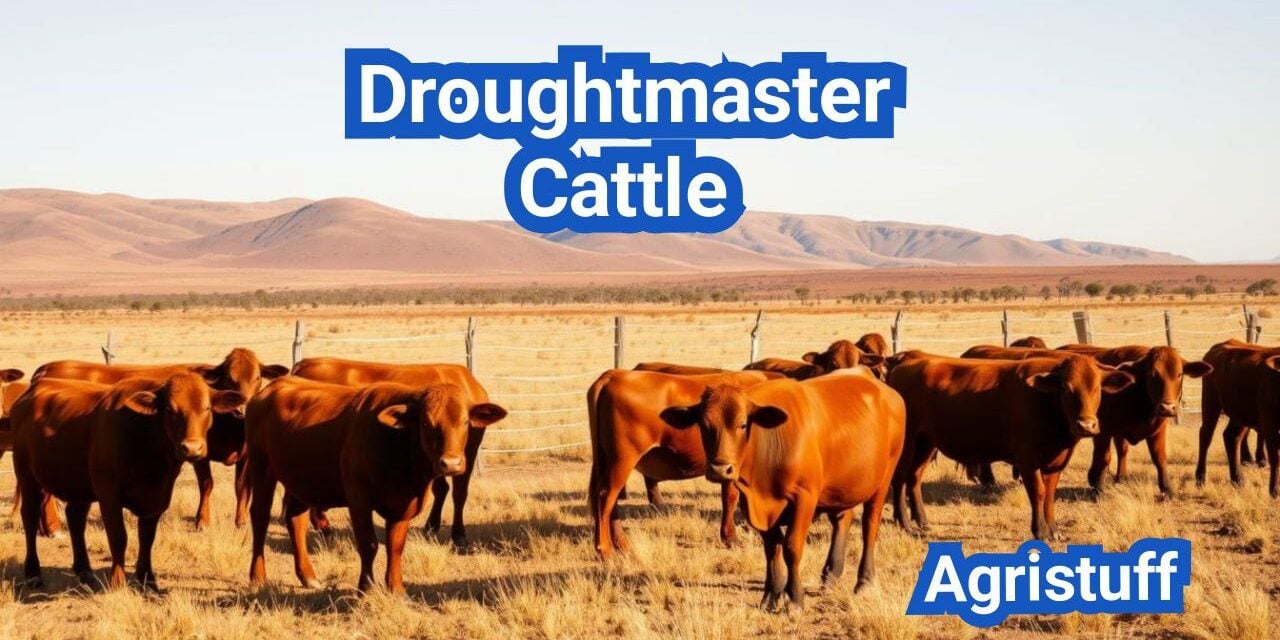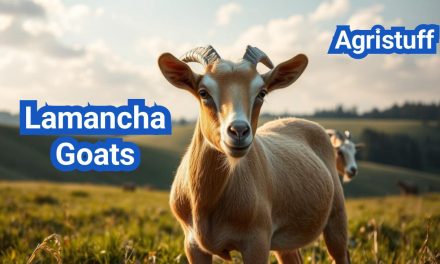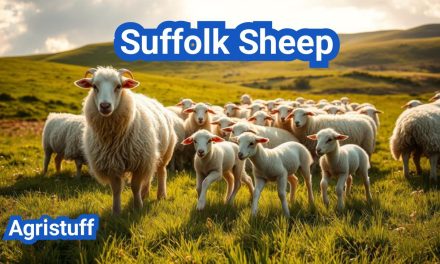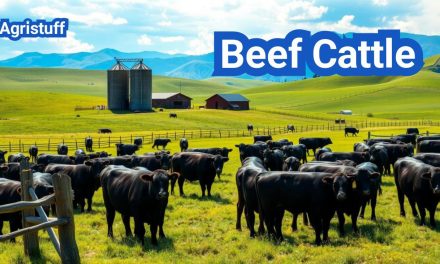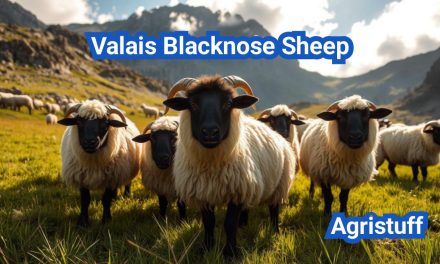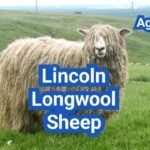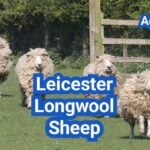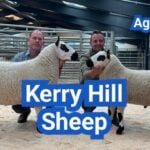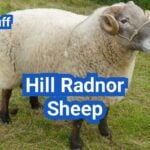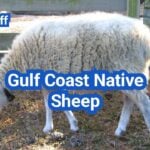The Droughtmaster breed has a rich history, originating in North Queensland, Australia, by crossing zebuine cattle with those of British origin. This unique blend has resulted in a robust and adaptable breed.
The breed’s development was focused on creating a hardy animal capable of thriving in challenging environments. Today, the Droughtmaster is recognized for its resilience and productivity.
This article will delve into the breed’s history, characteristics, breeding practices, and uses, providing a comprehensive overview for those interested in this remarkable breed.
Key Takeaways
- Originated in North Queensland, Australia
- Developed by crossing zebuine and British cattle
- Known for resilience and productivity
- Thrives in challenging environments
- Used for beef production
Understanding Droughtmaster Cattle
Droughtmaster cattle are a testament to successful cattle breeding, combining heat tolerance with high productivity. This breed has been developed to excel in challenging environmental conditions, making them an ideal choice for farmers in tropical and subtropical regions.
What Makes Droughtmaster Cattle Unique
Droughtmaster cattle are known for their exceptional heat tolerance, parasite resistance, and digestive efficiency. These characteristics make them particularly suited to harsh climates where other breeds might struggle. The breed’s heat tolerance is attributed to its Bos indicus lineage, which provides natural resistance to high temperatures.
Their parasite resistance is another significant advantage, reducing the need for frequent treatments and improving overall herd health. Additionally, Droughtmaster cattle have a robust digestive system, allowing them to thrive on lower-quality feed.
The Significance of Droughtmaster in Modern Cattle Farming
In modern cattle farming, the Droughtmaster breed plays a crucial role, especially in regions prone to drought and high temperatures. Their ability to maintain productivity in challenging conditions makes them a valuable asset for farmers looking to improve the resilience of their herds.
According to cattle breeding expert, Dr. John Bertram, “Droughtmaster cattle represent a significant advancement in cattle breeding, offering a robust and adaptable breed that can thrive in a variety of environments.” This is reflected in their growing popularity among cattle farmers worldwide.
“The Droughtmaster breed has revolutionized cattle farming in tropical regions by providing a hardy and productive animal that can withstand harsh conditions.”
The benefits of raising Droughtmaster cattle include improved herd resilience, reduced veterinary costs due to their parasite resistance, and enhanced productivity in challenging environments. The following table summarizes the key advantages of Droughtmaster cattle:
| Characteristic | Benefit |
|---|---|
| Heat Tolerance | Improved productivity in high temperatures |
| Parasite Resistance | Reduced veterinary costs and improved herd health |
| Digestive Efficiency | Ability to thrive on lower-quality feed |
The History of Droughtmaster Cattle

Originating in 1930s Australia, the Droughtmaster cattle breed was developed to thrive in harsh environments. The breed was created by crossing Bos indicus and Bos taurus breeds, aiming to combine the heat tolerance and resistance to parasites of the zebuine cattle with the beef production qualities of the European breeds.
Development in 1930s Australia
The development of the Droughtmaster breed began in North Queensland, Australia, during the 1930s. This region’s challenging climate and environmental conditions necessitated the creation of a cattle breed that could withstand high temperatures, drought, and ticks. The breeders achieved this by crossbreeding Bos indicus and Bos taurus cattle, resulting in a robust and adaptable breed.
The Droughtmaster breed was developed to be highly resistant to the cattle tick (Rhipicephalus microplus), a significant pest in Northern Australia. This resistance was a crucial factor in the breed’s success, as it reduced the need for frequent dipping and improved overall herd health.
Key Figures in Droughtmaster Development
Several key figures played a significant role in the development of the Droughtmaster breed. While specific names may not be widely documented, it is acknowledged that pioneering breeders in North Queensland were instrumental in establishing the breed’s foundation. Their efforts focused on selecting and breeding cattle that exhibited desirable traits such as heat tolerance, parasite resistance, and high-quality beef production.
| Characteristic | Description | Benefit |
|---|---|---|
| Heat Tolerance | Inherited from Bos indicus | Thrives in high-temperature environments |
| Parasite Resistance | Developed through crossbreeding | Reduced need for tick dipping |
| Beef Production | Influenced by Bos taurus | High-quality beef |
Origin and Development
The Droughtmaster breed was created through a meticulous process of crossbreeding Bos indicus and Bos taurus cattle to produce a breed adapted to harsh tropical conditions.
This crossbreeding program aimed to combine the heat tolerance and hardiness of Bos indicus with the productivity and beef quality of Bos taurus. The result was a breed that thrives in challenging environmental conditions.
Bos Indicus and Bos Taurus Crossbreeding
The crossbreeding of Bos indicus and Bos taurus cattle was a strategic decision to leverage the strengths of both species. Bos indicus cattle are known for their heat tolerance and resistance to parasites, while Bos taurus cattle are renowned for their beef production qualities.
| Characteristics | Bos Indicus | Bos Taurus | Droughtmaster |
|---|---|---|---|
| Heat Tolerance | High | Low | High |
| Parasite Resistance | High | Low | High |
| Beef Quality | Moderate | High | High |
North Queensland’s Role in Breed Development
North Queensland played a pivotal role in the development of the Droughtmaster breed. The region’s tropical climate and challenging environmental conditions made it an ideal location for testing the breed’s adaptability and hardiness.
The breeders in North Queensland worked tirelessly to refine the breed through selective breeding practices, ensuring that the Droughtmaster cattle were not only resilient but also productive.
Physical Characteristics of Droughtmaster Cattle

Droughtmaster cattle exhibit a unique combination of physical features that contribute to their hardiness and efficiency. These characteristics are crucial in understanding their adaptability and productivity in various farming conditions.
Distinctive Physical Features
Droughtmaster cattle are known for their short, sleek coat and loose skin, which are among their most distinctive physical features. The loose skin is particularly beneficial as it helps in heat tolerance and resistance to certain parasites. Their overall build is robust, contributing to their durability and ability to thrive in challenging environments.
Color and Size Specifications
Droughtmaster cattle are characterized by their red color, which can vary from a deep red to a lighter shade. This coloration is a result of their breeding history, which involved crossing Bos indicus and Bos taurus cattle. In terms of size, Droughtmasters are generally of a moderate to large build, with males being larger than females, showcasing a clear example of sexual dimorphism.
Sexual Dimorphism in Droughtmasters
The sexual dimorphism in Droughtmaster cattle is evident, with males typically larger and more muscular than females. This difference is not just in size but also in the overall build, with males having a more pronounced muscular development. Females, on the other hand, are known for their maternal traits and fertility, making them crucial for the sustainability of the herd.
Understanding these physical characteristics is vital for cattle breeders and farmers who are looking to incorporate Droughtmaster cattle into their operations. Their unique features contribute significantly to their popularity in various cattle farming contexts.
Adaptability and Environmental Tolerance
One of the standout features of Droughtmaster cattle is their ability to thrive in harsh climates. This adaptability is crucial for farmers operating in challenging environmental conditions.
Heat Tolerance Mechanisms
Droughtmaster cattle have been bred to possess high heat tolerance, thanks to their genetic makeup, which includes traits from Bos indicus cattle. This heat tolerance is vital for their survival and productivity in hot climates.
Their ability to regulate body temperature is a key factor in their heat tolerance. This is achieved through efficient sweating and a coat that reflects sunlight.
Drought Resistance Capabilities
Droughtmaster cattle are also known for their drought resistance. This is partly due to their ability to withstand water deprivation and continue to produce under conditions where water is scarce.
Their robust constitution allows them to maintain productivity even in dry conditions, making them an ideal choice for farming in areas prone to drought.
Tick and Parasite Resistance
In addition to heat and drought tolerance, Droughtmaster cattle have a natural resistance to ticks and parasites. This resistance reduces the need for chemical treatments, making them a more sustainable option for farmers.
The benefits of Droughtmaster cattle are summarized in the table below, highlighting their key advantages in terms of environmental tolerance.
| Trait | Description | Benefit |
|---|---|---|
| Heat Tolerance | Efficient body temperature regulation | Productivity in hot climates |
| Drought Resistance | Ability to withstand water scarcity | Survival and productivity in dry conditions |
| Tick and Parasite Resistance | Natural resistance to external parasites | Reduced need for chemical treatments |
Droughtmaster cattle offer a robust solution for farmers facing environmental challenges, combining heat tolerance, drought resistance, and parasite resistance.
How to Select Quality Droughtmaster Cattle

Quality Droughtmaster cattle selection is a multi-faceted process that requires attention to detail and a deep understanding of the breed. To make informed decisions, farmers must consider several key factors that contribute to the overall quality and performance of their cattle.
Evaluating Physical Traits
When evaluating physical traits, several characteristics are crucial. These include:
- Conformation: A well-structured body with a good balance between the fore and hindquarters is essential.
- Size and Weight: Droughtmasters are known for their moderate size, with mature cows typically weighing between 1,000 to 1,200 pounds.
- Coat Color and Condition: The breed is known for its red or red roan coat, and the condition of the coat can indicate overall health.
Assessing Genetic Background
Assessing the genetic background of Droughtmaster cattle involves looking at their pedigree and Estimated Breeding Values (EBVs). Single-Step BREEDPLAN is a valuable tool that provides accurate EBVs by combining pedigree, performance, and genomic information.
Key genetic factors to consider include:
- Growth Rate: Cattle with a higher growth rate tend to reach market weight more quickly.
- Fertility: Selecting for fertility ensures a productive breeding program.
- Disease Resistance: Genetic resistance to diseases and parasites is a valuable trait.
Understanding Performance Records
Performance records provide critical information about the productivity and efficiency of Droughtmaster cattle. These records can include growth rates, fertility data, and carcass quality information.
When reviewing performance records, look for:
- Reliable Data: Ensure that the data is accurate and collected over a significant period.
- Comparative Analysis: Compare the performance of different animals within the herd to identify top performers.
- Long-term Trends: Analyze trends over multiple generations to understand the genetic progress of the herd.
Establishing a Droughtmaster Herd

The process of setting up a Droughtmaster herd involves several critical decisions that impact the long-term success of the operation. Establishing a Droughtmaster herd requires careful planning, from selecting the initial stock to designing facilities and implementing health programs.
Initial Stock Selection
Selecting the right initial stock is crucial for the success of a Droughtmaster herd. Farmers should look for animals with strong genetic backgrounds, focusing on traits such as fertility, growth rate, and disease resistance. It’s also essential to choose cattle that are well-adapted to the local climate and environmental conditions.
When sourcing Droughtmaster cattle, consider the following:
- Purchase from reputable breeders who can provide detailed breeding and health records.
- Inspect the cattle for signs of good health and vigor.
- Ensure the cattle have been raised in conditions similar to those on your farm to minimize stress during transition.
Facility Requirements
Drougtmaster cattle are known for their hardiness, but appropriate facilities are still necessary to ensure their health and productivity. Facilities should provide adequate shelter, feeding areas, and watering systems.
Key considerations for facility design include:
- Durable fencing that can withstand the cattle’s movement and grazing habits.
- Adequate shade and shelter to protect the cattle from extreme weather conditions.
- Efficient feeding and watering systems that minimize waste and ensure all cattle have access to nutrition.
Herd Health Programs
Maintaining a robust herd health program is vital for the productivity and profitability of a Droughtmaster operation. This includes regular veterinary care, vaccinations, parasite control, and nutritional management.
A comprehensive herd health program should cover:
| Health Measure | Description | Frequency |
|---|---|---|
| Vaccinations | Protect against major diseases | Annually or as recommended by a veterinarian |
| Parasite Control | Manage internal and external parasites | Regularly, based on parasite load and seasonal factors |
| Nutritional Management | Ensure balanced diet and adequate nutrition | Ongoing, with adjustments based on growth stage and environmental conditions |
By focusing on initial stock selection, facility requirements, and herd health programs, farmers can establish a thriving Droughtmaster herd that is resilient, productive, and profitable.
Droughtmaster Cattle Breeding Practices

To maximize the potential of Droughtmaster cattle, farmers must adopt informed breeding practices. Effective breeding is crucial for enhancing the productivity, resilience, and adaptability of these cattle.
Selection Criteria for Breeding Stock
Selecting the right breeding stock is fundamental to a successful Droughtmaster cattle breeding program. Key selection criteria include fertility, growth rate, and resistance to diseases and parasites. Farmers should evaluate the genetic background of potential breeding stock to ensure they possess desirable traits.
The physical characteristics of the breeding stock, such as conformation and overall health, are also critical. Visual appraisal and performance records can help in making informed decisions.
Crossbreeding Strategies for Adaptation
Crossbreeding is a valuable strategy for improving the adaptability of Droughtmaster cattle to various environmental conditions. By introducing genes from other breeds, farmers can enhance traits such as heat tolerance and resistance to local pests and diseases.
- Identify the breeding goals and the environmental challenges faced by the cattle.
- Select appropriate breeds for crossbreeding based on their genetic strengths.
- Monitor the performance of crossbred cattle to assess the effectiveness of the breeding strategy.
Genetic Improvement Programs
Participating in genetic improvement programs can significantly benefit Droughtmaster cattle breeders. These programs provide access to advanced genetic technologies and data that can help in selecting superior breeding stock.
Genetic improvement initiatives often involve performance recording, genetic evaluation, and selection of animals with superior genetic merit. By leveraging these programs, breeders can accelerate the genetic progress of their herds.
Daily Management and Care
Effective daily management is crucial for the health and productivity of Droughtmaster cattle. Proper care involves a combination of nutritional management, appropriate handling practices, and health monitoring.
Nutritional Requirements
Droughtmaster cattle, like other beef breeds, require a balanced diet that includes adequate energy, protein, vitamins, and minerals. Their nutritional needs vary depending on factors such as age, sex, and stage of production.
A key aspect of their nutritional requirements is the need for high-quality forage. Droughtmaster cattle are known for their ability to thrive on pasture, making them well-suited to grazing operations. However, the quality of the pasture can significantly impact their nutritional intake.
| Nutrient | Requirement | Source |
|---|---|---|
| Energy | High | Pasture, Grains |
| Protein | Moderate to High | Legumes, Protein Supplements |
| Phosphorus | Critical | Phosphorus Supplements, Certain Grains |
Phosphorus and Protein Supplementation
Phosphorus is a critical nutrient for Droughtmaster cattle, particularly in regions where pasture phosphorus levels are low. Supplementation with phosphorus can improve fertility, growth rates, and overall health.
Protein supplementation is also vital, especially during periods of poor pasture quality or when cattle are under stress. The use of protein supplements can help maintain optimal growth and productivity.
“Proper supplementation with phosphorus and protein is essential for maintaining the health and productivity of Droughtmaster cattle, particularly in challenging environmental conditions.”
Handling Practices for Docile Management
Droughtmaster cattle are known for their docility, which makes them easier to handle. Effective handling practices can further enhance their temperament and reduce stress.
Key handling practices include moving cattle quietly and calmly, avoiding the use of dogs unless absolutely necessary, and ensuring handlers are experienced and gentle.
By implementing these daily management and care practices, farmers can optimize the health, productivity, and welfare of their Droughtmaster cattle.
Reproductive Management

Reproductive management plays a vital role in optimizing the productivity of Droughtmaster cattle herds. Effective breeding strategies are essential for maintaining the health and profitability of the herd.
Fertility and Calving Ease
Droughtmaster cattle are known for their high fertility rates and ease of calving, making them an attractive choice for cattle breeders. High fertility is a key characteristic that contributes to the breed’s popularity, as it ensures a higher number of calves born per year.
According to breeders, “The Droughtmaster breed has been developed to thrive in challenging environmental conditions, and their reproductive efficiency is a testament to their robustness.”
“The ability of Droughtmaster cattle to calve easily and frequently is a significant advantage in cattle production systems.”
Maternal Traits of Droughtmaster Cows
The maternal traits of Droughtmaster cows are highly regarded in the cattle industry. These cows are known for their strong maternal instincts and ability to nurture their calves effectively.
Droughtmaster cows are praised for their ability to protect and care for their young, ensuring higher survival rates among calves. This trait is particularly valuable in extensive cattle production systems where calf survival is critical to herd productivity.
Seasonal Breeding Considerations
Seasonal breeding is an important aspect of reproductive management in Droughtmaster cattle. By synchronizing breeding with favorable environmental conditions, producers can optimize reproductive outcomes.
- Aligning breeding seasons with peak nutritional periods can enhance fertility and conception rates.
- Implementing seasonal breeding programs can help manage herd health and reduce the risk of disease.
- Careful planning of breeding seasons is crucial for maximizing the productivity of Droughtmaster cattle.
In conclusion, reproductive management is a critical component of successful Droughtmaster cattle breeding programs. By focusing on fertility, calving ease, maternal traits, and seasonal breeding considerations, producers can optimize the productivity and profitability of their herds.
Commercial Uses of Droughtmaster Cattle

With their robust adaptability and high-quality beef, Droughtmaster cattle are increasingly sought after in the cattle industry. Their unique combination of traits makes them an ideal choice for various commercial applications.
Beef Production Qualities
Droughtmaster cattle are prized for their beef production qualities, which include rapid growth rates, high fertility, and the ability to thrive in challenging environmental conditions. These traits make them particularly well-suited for beef production in tropical and subtropical regions.
The breed’s heat tolerance and resistance to parasites contribute significantly to its productivity and profitability in harsh climates. As a result, Droughtmaster cattle are often used in crossbreeding programs to improve the hardiness and productivity of other breeds.
Carcass Quality and MSA Grading
The carcass quality of Droughtmaster cattle is another significant advantage. Their beef is known for its tenderness, juiciness, and flavor, which are critical factors in achieving high Meat Standards Australia (MSA) grading. The MSA grading system is a benchmark for beef quality, and Droughtmaster cattle consistently meet or exceed these standards.
Carcass quality is influenced by factors such as genetics, nutrition, and handling practices. Droughtmaster breeders focus on selecting for these traits to ensure their cattle produce high-quality beef that commands premium prices in the market.
Economic Benefits of Raising Droughtmasters
Raising Droughtmaster cattle offers several economic benefits, including reduced production costs due to their hardiness and resistance to disease. Their ability to thrive on pasture with minimal supplementation reduces feed costs, making them an economical choice for beef producers.
Additionally, the high-quality beef produced by Droughtmaster cattle can command premium prices, enhancing the profitability of beef production operations. The breed’s fertility and calving ease also contribute to its economic viability by reducing the costs associated with reproductive management.
Droughtmaster Cattle in the United States

With their origins in Australia, Droughtmaster cattle are now making a substantial impact on the American cattle farming landscape. Their introduction to the United States has brought a new dimension to the country’s beef production industry, particularly in regions with challenging climatic conditions.
Introduction and Adoption in the U.S.
The adoption of Droughtmaster cattle in the U.S. has been driven by their exceptional heat tolerance and beef production qualities. Farmers across the country, especially in the southern states, have found Droughtmaster cattle to be an excellent choice due to their ability to thrive in hot and humid climates.
Performance in Gulf Coast Regions
Droughtmaster cattle have shown remarkable performance in the Gulf Coast regions of the United States. Their resistance to ticks and parasites has been particularly beneficial in this area, reducing the need for frequent veterinary interventions and improving overall herd health.
- High fertility rates
- Rapid growth rates
- Excellent carcass quality
American Droughtmaster Associations and Resources
For farmers and breeders interested in Droughtmaster cattle, there are several associations and resources available in the United States. These organizations provide valuable support, including breed information, breeding programs, and networking opportunities.
Some of the key resources include:
- The American Droughtmaster Association
- Breed-specific registries
- Regional cattle breeding clubs
Market Considerations and Economics

Understanding the market considerations and economics of Droughtmaster cattle is crucial for producers looking to maximize their returns. The market for Droughtmaster cattle and their products is influenced by various factors, including current trends, pricing, and return on investment.
Current Market Trends
The demand for Droughtmaster cattle is on the rise due to their hardiness, productivity, and the increasing demand for high-quality beef. Current market trends indicate a growing interest in breeds that offer adaptability and resistance to environmental stresses.
- Increased demand for grass-fed beef
- Growing preference for cattle with heat tolerance
- Expansion of Droughtmaster cattle into new markets
Pricing and Return on Investment
The pricing of Droughtmaster cattle can vary based on factors such as genetics, age, and breeding history. Producers can expect a significant return on investment due to the breed’s superior growth rates and carcass quality.
- Initial investment in high-quality breeding stock
- Potential for increased revenue through premium beef sales
- Long-term savings through reduced veterinary and maintenance costs
Marketing Strategies for Droughtmaster Products
Effective marketing strategies are crucial for the successful sale of Droughtmaster cattle and their products. Producers should focus on highlighting the unique qualities of the breed.
- Emphasizing the breed’s adaptability and hardiness
- Targeting niche markets for grass-fed and premium beef
- Utilizing digital marketing platforms to reach a wider audience
By understanding and leveraging these market considerations and economics, producers can optimize their Droughtmaster cattle operations for success.
The Future of Droughtmaster Cattle
The future of Droughtmaster cattle appears bright, driven by their exceptional adaptability, hardiness, and the increasing demand for premium beef products. As the cattle industry continues to evolve, the Droughtmaster breed is poised to play a significant role in meeting the needs of producers and consumers alike.
Droughtmaster cattle breed information highlights their robust characteristics, making them an attractive choice for farmers and ranchers seeking to improve their herd’s resilience and productivity. With their ability to thrive in challenging environments, Droughtmasters are well-suited to meet the demands of a changing climate.
As the market continues to trend towards high-quality beef, the Droughtmaster breed is likely to remain a popular choice among producers. Their unique combination of hardiness, fertility, and beef production qualities makes them an ideal breed for a wide range of production systems.
FAQ
What is the Droughtmaster cattle breed?
The Droughtmaster is a breed of cattle developed in Australia, known for its heat tolerance, parasite resistance, and high-quality beef production.
Where did the Droughtmaster breed originate?
The Droughtmaster breed originated in North Queensland, Australia, in the 1930s, as a result of crossbreeding between Bos indicus and Bos taurus cattle.
What are the key characteristics of Droughtmaster cattle?
Droughtmaster cattle are known for their red color, medium to large size, heat tolerance, drought resistance, and resistance to ticks and parasites.
What makes Droughtmaster cattle suitable for harsh climates?
Droughtmaster cattle are suitable for harsh climates due to their heat tolerance, drought resistance, and parasite resistance, making them ideal for cattle farming in tropical and subtropical regions.
How do I select quality Droughtmaster cattle?
To select quality Droughtmaster cattle, evaluate their physical traits, assess their genetic background, and review their performance records.
What are the benefits of raising Droughtmaster cattle?
The benefits of raising Droughtmaster cattle include their high-quality beef production, ease of calving, and maternal traits, making them a profitable and sustainable choice for cattle farmers.
Are Droughtmaster cattle used in the United States?
Yes, Droughtmaster cattle are used in the United States, particularly in Gulf Coast regions, where their heat tolerance and parasite resistance are valuable assets.
What are the economic benefits of raising Droughtmaster cattle?
The economic benefits of raising Droughtmaster cattle include their potential for high returns on investment, due to their high-quality beef production and efficient growth rates.
How do I establish a Droughtmaster herd?
To establish a Droughtmaster herd, select initial stock carefully, ensure adequate facilities, and implement a herd health program to maintain the health and productivity of your cattle.
What are the nutritional requirements of Droughtmaster cattle?
Droughtmaster cattle require a balanced diet that includes adequate phosphorus and protein supplementation, particularly during the dry season, to maintain their health and productivity.
How do I manage the reproduction of Droughtmaster cattle?
To manage the reproduction of Droughtmaster cattle, focus on fertility, calving ease, and maternal traits, and consider seasonal breeding strategies to optimize reproductive performance.
Conclusion of: Droughtmaster Cattle
Overview: why Droughtmaster Cattle matter
Droughtmaster Cattle are a tropically adapted Australian beef breed renowned for balancing hardiness with carcass merit, which makes Droughtmaster Cattle especially interesting for producers working in hot, humid, or seasonally dry environments across the U.S. Gulf Coast and similar climates; from heat tolerance to docility, Droughtmaster Cattle offer a practical composite package for real-world ranch conditions. Droughtmaster Australia — official site
History & origin of Droughtmaster Cattle
Droughtmaster Cattle began in North Queensland in the early 1900s as cattlemen blended Bos indicus with British Bos taurus breeds to create stock that could resist heat, drought, and parasites; the name “Droughtmaster” emerged as these composite lines consistently performed under tough northern conditions, and Droughtmaster Cattle formalized into a recognized breed by the mid-20th century. Breed history — Droughtmaster Australia
Recognition and industry role of Droughtmaster Cattle
As Droughtmaster Cattle spread through northern Australia, the breed became a cultural and economic fixture; Droughtmaster Cattle were even recognized by the National Trust as a Queensland icon in 2006, highlighting their importance to regional beef production and the broader supply chain. Beef Australia — Droughtmaster profile
Genetic foundation: what’s inside Droughtmaster Cattle
The stabilized composite behind Droughtmaster Cattle mixes indicus adaptation with taurus carcass and maternal traits—commonly including Brahman with Shorthorn/Hereford influences—so Droughtmaster Cattle deliver heat tolerance, tick resistance, and efficient grazing without sacrificing beef quality and reproductive performance. CABI Compendium — Droughtmaster cattle
Breed standards & appearance of Droughtmaster Cattle
Most Droughtmaster Cattle are solid red from honey to dark mahogany with a sleek coat and loose hide that aids thermoregulation; Droughtmaster Cattle can be horned or naturally polled, and their medium-to-large frames are selected for sound structure, walking ability, and maternal capacity. Oklahoma State University — Breeds of Livestock: Droughtmaster
Heat tolerance: why Droughtmaster Cattle keep working
Selection pressure in hot, humid zones means Droughtmaster Cattle have sweat-efficient coats and adaptive physiology that help maintain intake and reproduction when temperatures spike; for U.S. ranches confronting heat stress, Droughtmaster Cattle reflect the general advantage of indicus-derived thermotolerance. UF/IFAS — Beef cattle thermotolerance
Parasites & ticks: resilience of Droughtmaster Cattle
Ticks and external parasites erode performance, so the indicus influence in Droughtmaster Cattle helps reduce burdens and maintain fertility and gain; this is relevant in the U.S. where cattle fever ticks persist regionally and biosecurity remains vital for any herd considering Droughtmaster Cattle or similar composites. USDA APHIS — Cattle fever tick
Temperament & handling benefits in Droughtmaster Cattle
Docility reduces labor risk and dark-cutting losses, and Droughtmaster Cattle are widely noted for calm demeanors that complement low-stress stockmanship; calmer Droughtmaster Cattle typically load, wean, and process with fewer setbacks, benefiting welfare and meat quality outcomes. Beef Quality Assurance — low-stress cattle handling
Reproductive traits of Droughtmaster Cattle
Fertility under stress distinguishes Droughtmaster Cattle: moderate birth weights, sensible pelvic structure, and strong maternal instincts support high branding/weaning rates when nutrition is right; in seasonal systems, Droughtmaster Cattle help stabilize pregnancy percentages through variability. Meat & Livestock Australia — Reproduction in beef cattle
Carcass quality & grading context for Droughtmaster Cattle
Modern selection balances adaptation with eating quality so Droughtmaster Cattle can grade competitively; the Australian Meat Standards Australia (MSA) program explicitly models tropical breed content, confirming that well-managed Droughtmaster Cattle can meet consumer expectations for tenderness and flavor. MLA — Meat Standards Australia
Nutrition: dry-season protein strategy for Droughtmaster Cattle
Even adapted Droughtmaster Cattle need adequate protein to sustain rumen microbes in the dry season; strategic use of protein or urea supplements helps Droughtmaster Cattle maintain condition, conception, and weaning weights when pasture crude protein dips. FutureBeef — Protein & urea supplementation
Nutrition: phosphorus planning with Droughtmaster Cattle
Phosphorus deficiency is common on many tropical soils, and Droughtmaster Cattle express their genetics best when wet-season P is addressed; structured mineral programs for Droughtmaster Cattle lift intake, growth, and fertility in deficient regions. MLA — Phosphorus management (manual)
Grazing systems that suit Droughtmaster Cattle
Rotational or adaptive grazing helps Droughtmaster Cattle convert rough forage into beef while protecting rangeland health; combining water spacing, shade, and rest-recovery cycles enables Droughtmaster Cattle to hold performance through heat and variable rainfall. USDA NRCS — Prescribed Grazing
Breeding tools: EBVs & indexes for Droughtmaster Cattle
To accelerate genetic gain, many producers select Droughtmaster Cattle using BREEDPLAN Estimated Breeding Values and a tailored Droughtmaster Selection Index; this ensures Droughtmaster Cattle sires align with goals for calving ease, growth, fertility, temperament, and carcass traits. BREEDPLAN — Droughtmaster Selection Index
Genomics: Single-Step for Droughtmaster Cattle
Genomic evaluations now inform selection in Droughtmaster Cattle via Single-Step BREEDPLAN, which blends DNA, pedigree, and performance so young Droughtmaster Cattle can be ranked with greater accuracy before large progeny tests accumulate. BREEDPLAN — Single-Step for Droughtmaster
Crossbreeding roles for Droughtmaster Cattle
Composite systems use heterosis to stack adaptation, fertility, and carcass traits, and Droughtmaster Cattle slot neatly into these programs to stabilize temperament and maternal function while holding saleable yield; with sensible sire selection, crossbreds from Droughtmaster Cattle can target specific markets reliably. FutureBeef — Breeding for Profit (composites)
Health & biosecurity with Droughtmaster Cattle
Heat-ready cattle are not immune to disease, so Droughtmaster Cattle still require vaccination schedules, parasite control, and movement biosecurity; U.S. producers evaluating Droughtmaster Cattle genetics should align protocols with federal and state rules to protect herd health. USDA APHIS — Cattle health information
U.S. import & genetics access for Droughtmaster Cattle
Direct live import is tightly regulated, so most U.S. interest in Droughtmaster Cattle focuses on semen and embryos subject to USDA APHIS rules; consult accredited import brokers and veterinarians to evaluate options for bringing Droughtmaster Cattle genetics into breeding plans lawfully. USDA APHIS — Animal & product import overview
Economics & marketing with Droughtmaster Cattle
Profitability depends on reproduction, growth, and market access, not just breed; Droughtmaster Cattle can hit mainstream beef targets when managed for weight, finish, and temperament, and producers should benchmark Droughtmaster Cattle performance against local price grids and seasonal forage curves. USDA ERS — Cattle & beef sector
Climate resilience science behind Droughtmaster Cattle
Genomic studies on heat adaptation in cattle support the long-observed performance of Droughtmaster Cattle in hot environments, indicating selection has enriched alleles tied to thermotolerance, sweat gland function, and cellular stress response—traits Droughtmaster Cattle leverage on pasture. BMC Genomics — Heat-resistance loci in cattle
Nutrition across the year for Droughtmaster Cattle
Year-round planning ensures Droughtmaster Cattle never fall behind: protein support in the dry, phosphorus in the wet, and consistent access to clean water and shade all lift intake and reproductive performance so Droughtmaster Cattle can calve on time and wean heavier calves. FutureBeef — Beef cattle nutrition hub
Pasture improvement for Droughtmaster Cattle
Strategic pasture upgrades (legumes, drought-resilient grasses) and soil testing multiply the natural efficiency of Droughtmaster Cattle, because improved feedbase quality drives better daily gains and higher conception rates for Droughtmaster Cattle under commercial stocking rates. USDA NRCS — National Range & Pasture Handbook
Heifer development with Droughtmaster Cattle
Sound heifer programs keep Droughtmaster Cattle on track: target weights by joining, structured vaccination, and temperament selection reduce dystocia and improve lifetime fertility, so Droughtmaster Cattle heifers achieve earlier puberty and consistent first-calf performance. MLA — Heifer management
Bull selection & joining management for Droughtmaster Cattle
Pick Droughtmaster Cattle sires with EBVs that match your environment—calving ease for heifers, growth and rib/rump fat for finishing systems, and docility for handling; structured joining windows help Droughtmaster Cattle concentrate calving and simplify nutrition and marketing. BREEDPLAN — EBV & selection resources
Comparisons: Droughtmaster Cattle vs other heat-adapted breeds
Compared with Brahman, Beefmaster, or Bonsmara, Droughtmaster Cattle emphasize a balanced red coat, docility, and a British-influenced carcass profile while retaining indicus endurance; local trials should evaluate how Droughtmaster Cattle cross on existing cow bases to hit grid specs consistently. OSU — Beef cattle breeds index
Market endpoints & finishing for Droughtmaster Cattle
Grass or grain finishing can work for Droughtmaster Cattle depending on regional feed resources; the priority is to align Droughtmaster Cattle genetics with a path that reliably achieves saleable fatness and marbling under your cost structure and climate variability. MLA — Beef markets overview
Environmental stewardship with Droughtmaster Cattle
Resilient breeds reduce involuntary culls and reproductive wastage, and Droughtmaster Cattle can complement regenerative objectives by maintaining condition on sparse forage, which limits supplemental feeding and helps Droughtmaster Cattle integrate into low-input grazing plans. USDA NRCS — Conservation practice standards
Global footprint & case examples for Droughtmaster Cattle
Beyond Australia, Droughtmaster Cattle have been used in parts of Africa and Latin America for hot rangelands, and case studies show that well-finished Droughtmaster Cattle can meet premium specifications when bred and managed for eating quality and yield. Case study — Droughtmaster steers into a U.S. premium market
Final thought
If your environment includes heat, humidity, ticks, long walks to water, and variable forage, Droughtmaster Cattle present a proven blueprint for profitable, low-stress beef: select Droughtmaster Cattle with data (EBVs and indexes), plan protein and phosphorus by season, and finish Droughtmaster Cattle to the endpoint your market rewards. Droughtmaster Australia — official site
Sources & References
- Droughtmaster Australia — Breed history
- Droughtmaster Australia — Official site
- Beef Australia — Droughtmaster profile
- Oklahoma State University — Droughtmaster
- UF/IFAS — Thermotolerance research
- Beef Quality Assurance — Low-stress handling
- MLA — MSA program
- FutureBeef — Protein & urea supplementation
- MLA — Phosphorus management manual
- BREEDPLAN — Droughtmaster Selection Index
- BREEDPLAN — Single-Step implementation
- FutureBeef — Breeding for Profit (composites)
- USDA ERS — Cattle & beef sector
- BMC Genomics — Heat-resistance loci
- FutureBeef — Nutrition hub

